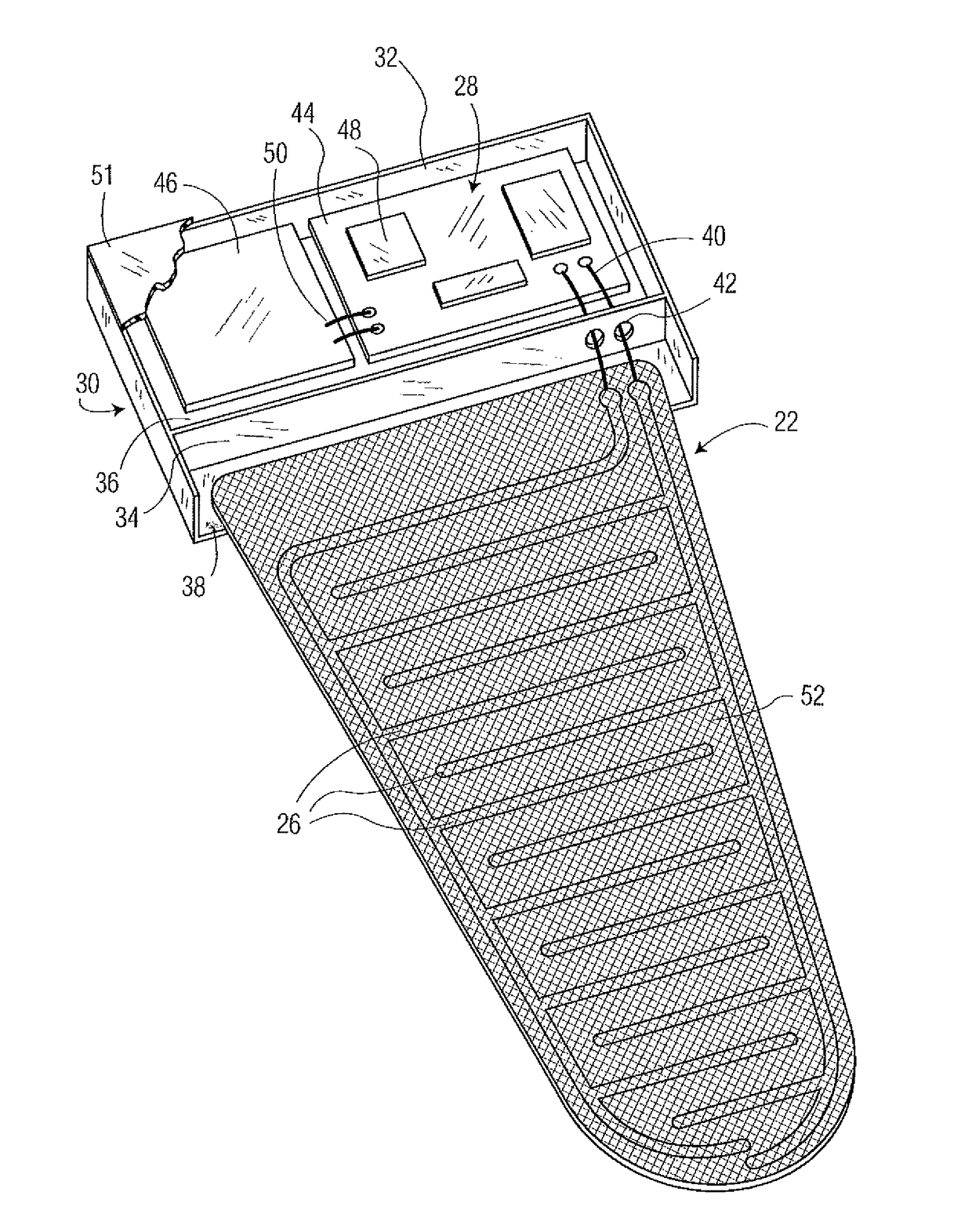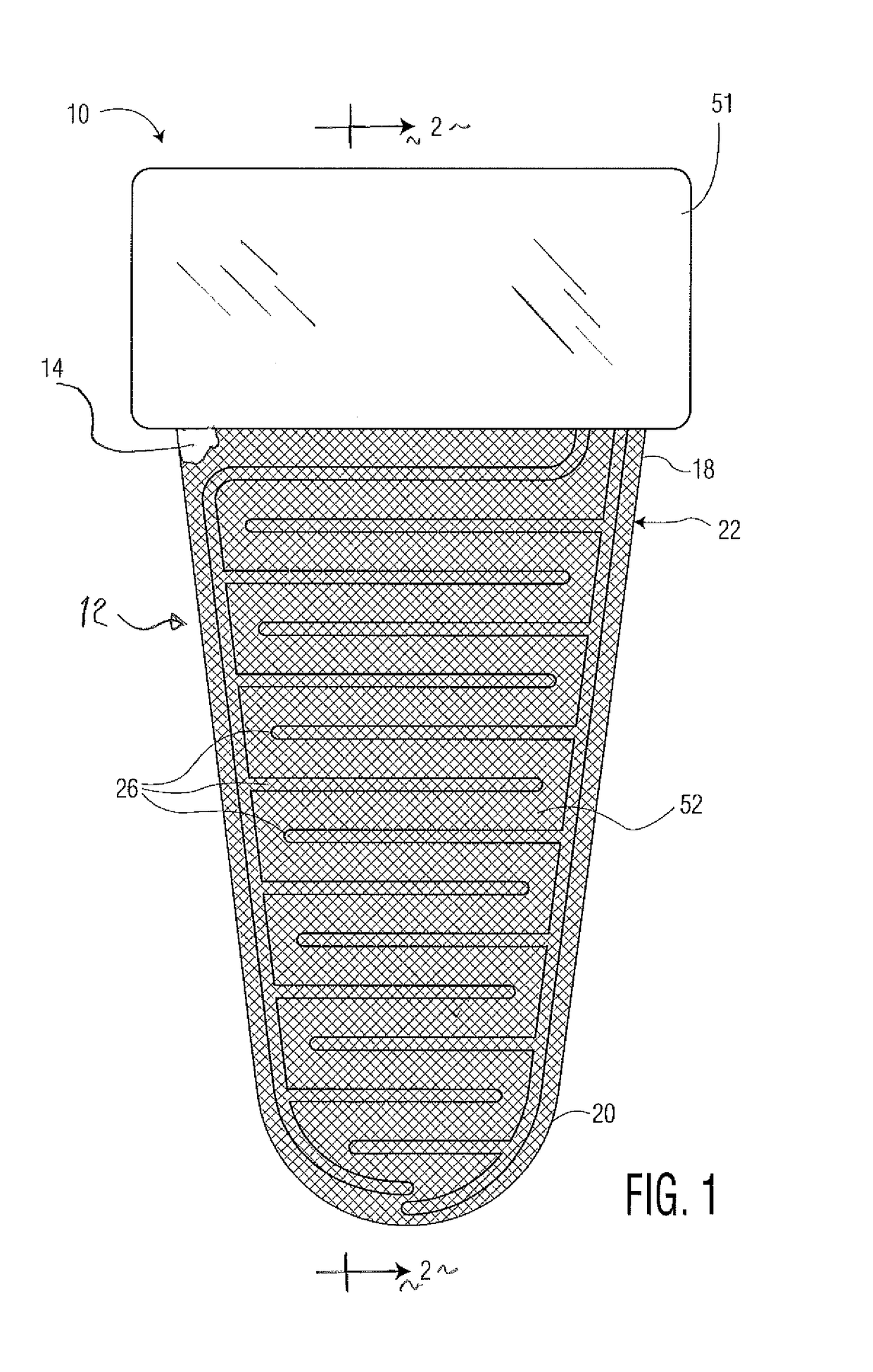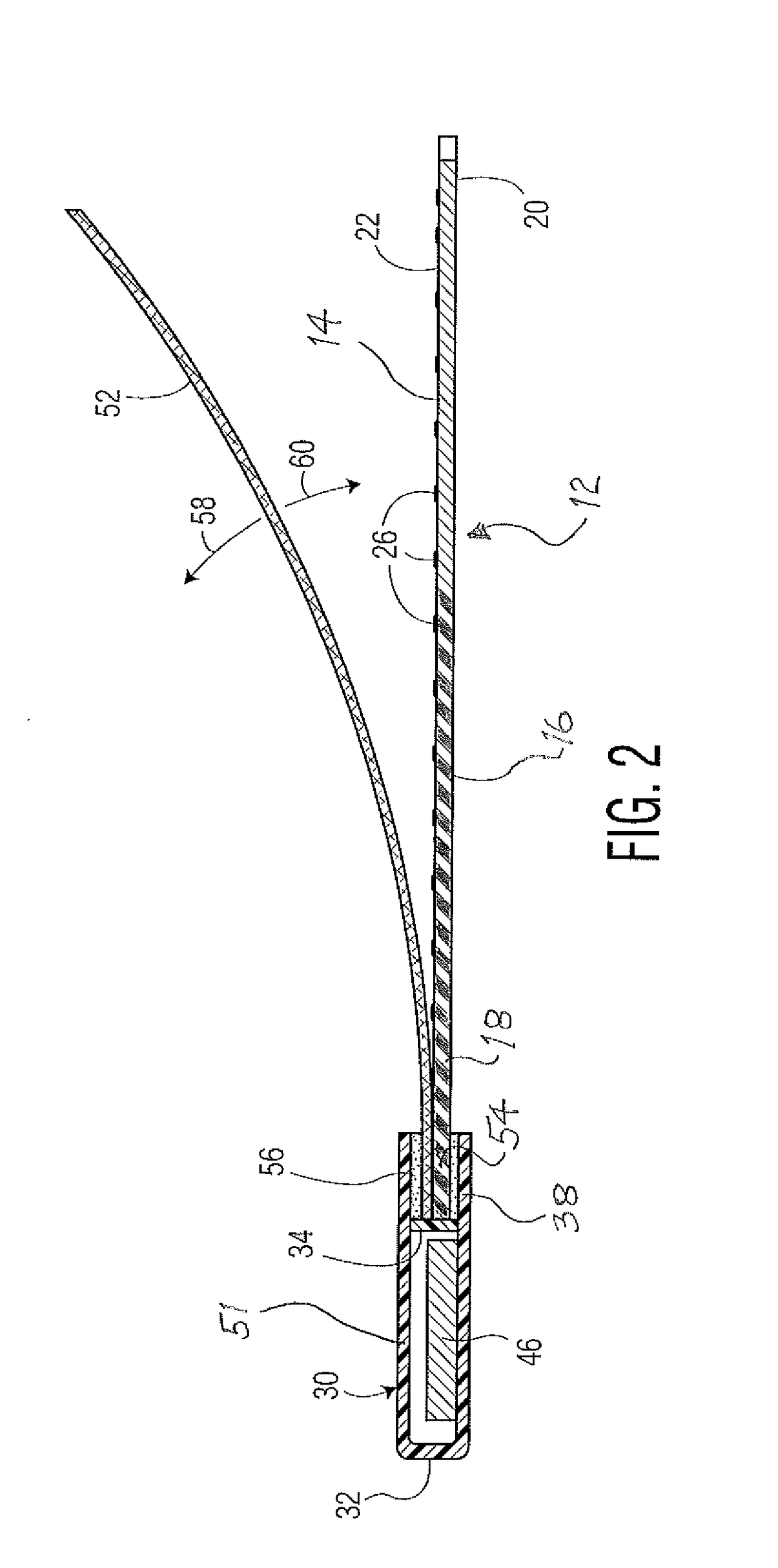Undergarment wearable patient monitor
a wearable monitor and patient technology, applied in the field of undergarment wearable patient monitors, can solve the problems of urinary incontinence, patients may be unnecessarily disturbed, and the development of decubitus ulcers
- Summary
- Abstract
- Description
- Claims
- Application Information
AI Technical Summary
Benefits of technology
Problems solved by technology
Method used
Image
Examples
Embodiment Construction
[0030]Various aspects of the present invention will evolve from the following detailed description of the preferred embodiments thereof which should be referenced to the prior delineated drawings.
[0031]The wearable apparatus sought for patenting as a whole is identified in the drawings by reference character 10. Apparatus 10 includes as one of its elements a base member 12, best shown in FIGS. 1 and 2. Base member 12 includes a first surface 14, which is intended to lie against a patient's skin, and an opposite second surface 16. Second surface 16 is intended to lie against an undergarment, which will be described in greater detail as the specification continues. Base member 12 may be formed of any suitable rigid or semi rigid material. As depicted in the drawings, a moisture sensor 22 on base member 12 is made from a flexible material and is tapered from a top portion 18 to a rounded bottom portion 20, FIG. 1. Typically, base member 12 is approximately 20 cm. long, 9 cm. across top...
PUM
 Login to View More
Login to View More Abstract
Description
Claims
Application Information
 Login to View More
Login to View More - R&D
- Intellectual Property
- Life Sciences
- Materials
- Tech Scout
- Unparalleled Data Quality
- Higher Quality Content
- 60% Fewer Hallucinations
Browse by: Latest US Patents, China's latest patents, Technical Efficacy Thesaurus, Application Domain, Technology Topic, Popular Technical Reports.
© 2025 PatSnap. All rights reserved.Legal|Privacy policy|Modern Slavery Act Transparency Statement|Sitemap|About US| Contact US: help@patsnap.com



